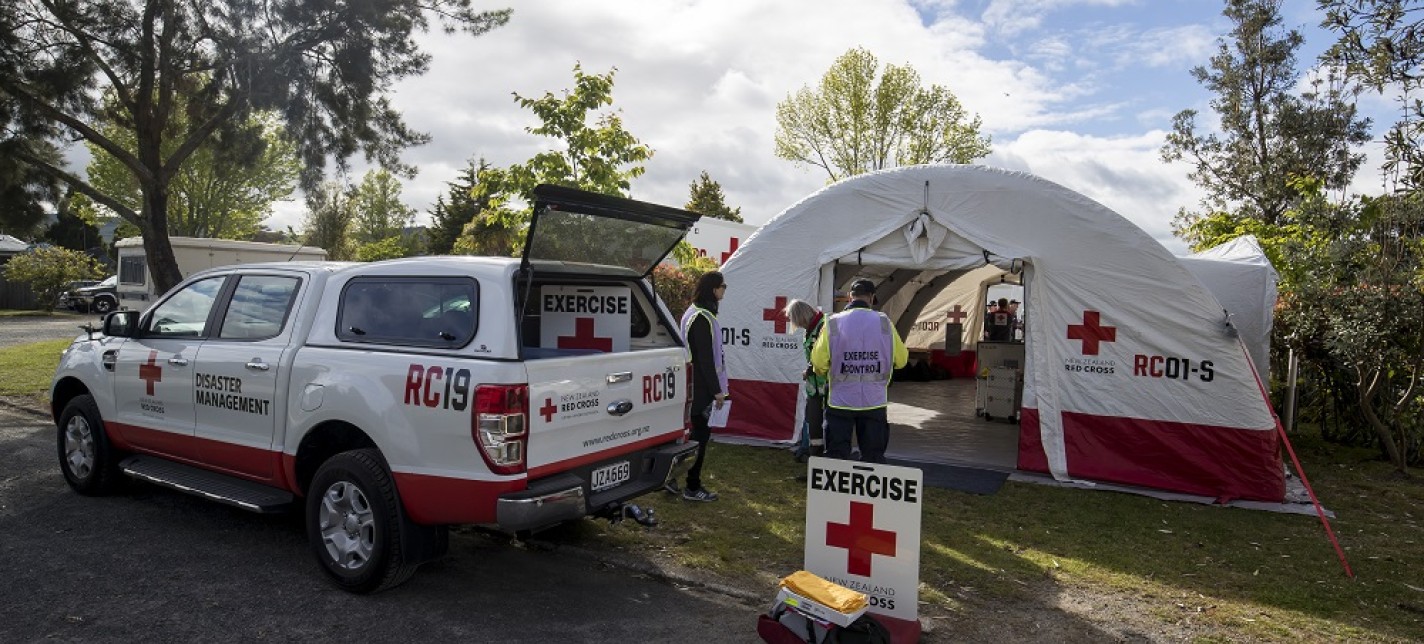DWST guidance


DWST volunteers are trained to offer comprehensive first aid and psychological and welfare support to communities during an emergency. This page has useful tools and information for our DWST volunteers.
There are 20 New Zealand Red Cross Disaster Welfare Support Teams (DWST) around the country, and each team usually has up to 20 members.
New Zealand Red Cross DWST volunteers are part of an emergency management community, which includes staff and volunteers from government and other emergency support agencies. Teams can be deployed to floods, tornados, earthquakes and other emergencies to provide essential support to the community.
All our DWST teams have a reference number to help us communicate efficiently during an emergency.
- RC06 Whangārei
- RC07 Auckland
- RC09 Hamilton
- RC10 Rotorua
- RC11 Tauranga
- RC12 Hawkes Bay
- RC13 Whanganui
- RC14 Taranaki
- RC15 Wairarapa
- RC18 Kāpiti-Mana
- RC20 Nelson
- RC21 Blenheim
- RC22 Greymouth
- RC23 Christchurch
- RC25 Timaru
- RC26 Queenstown
- RC27 Dunedin
- RC28 Invercargill
- RC29 Gore
- RC31 Tairāwhiti
DWST volunteers regularly participate in cross-agency exercises to practise different emergency scenarios.
Read more about working with other agencies during an emergency
We are often looking for new volunteers for our teams.
Search for DWST volunteer roles near you
The role of a DWST team leader
Each DWST has a team leader. Team leaders are also volunteers and many are also working full time. We don’t recruit for team leaders but promote DWST volunteers who have the right experience and training.
As a team leader your role is to:
- Cultivate a positive team culture.
- Mentor and lead your team.
- Work closely with Red Cross staff, usually through your Emergency Management Officer (EMO).
- Help your EMO recruit new team members and appoint team leadership positions.
- Liaise with our staff to ensure the maintenance of up-to-date records and systems.
- Facilitate regular meetings and training sessions with your team.
The role of a DWST team member
Your role as a DWST team member includes:
- Setting up and providing support in evacuation centres.
- Completing needs assessments to understand what support people need.
- Providing psychosocial (emotional, practical and social) support.
Tools and guidance
- Online tools and guidance for all New Zealand Red Cross volunteers.
- Microsoft Teams – so you can join calls with staff and volunteers.
- Volunteer Rescueis a website we use to track DWST team activities and records. For example, you can find out about training events and log your hours and activities.
- Using New Zealand Red Cross Volunteer Rescue
- Response Volunteer Handbook [PDF 3.3MB]
- The guiding policies in section 1.3 of the handbook are published on this website.
We provide every team with a team email address. For example, AKL07@redcross.org.nz is the email address for the DWST team based in Auckland. This email account is managed by the DWST team leader. Team members use their personal email address to send and receive emails.
Training and induction
You’ll typically train with your team once a fortnight during the evening. Training times vary from team to team. Your Emergency Management Officer (EMO) will let you know the training schedule for your team. You can also use Volunteer Rescue to check the schedule.
DWST training is a combination of in-team training and a deployment course. The deployment course is divided into five modules. The training covers health and safety, and the systems and processes necessary to excel as a DWST volunteer.
You will also attend two first aid training courses delivered by your New Zealand Red Cross colleagues.
